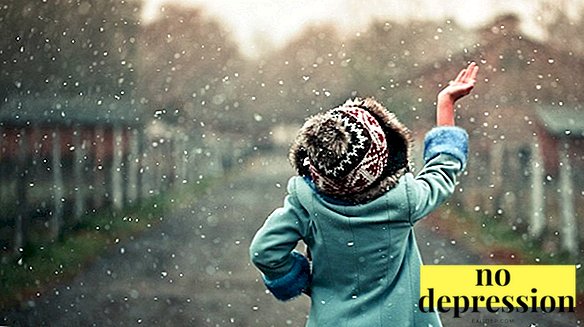Children who are bullied in school become neurotic, they often develop depressions, they may attempt to commit suicide.
Bulling at school - a widespread phenomenon that sometimes takes frankly shocking forms.
According to a 2007 survey, about 35% of American schoolchildren encountered any manifestations of bullying. More than 10% of children face bulling daily, in some cases - for many years.
What it is?
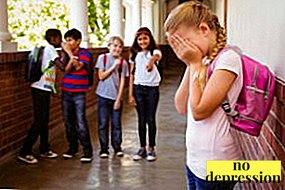
Bulling - aggression directed at one or several people and proceeding from the main part of the team or its individual members.
A more familiar word that is synonymous with bullying is baiting.
Bullying in the most aggressive and visible forms is most common in school.
Students and workers may also encounter him, but this occurs less often and in more hidden forms (which, however, in any case can cause serious mental trauma to the object of harassment).
In the process of harassment, the aggressors can resort to any kind of violence in order to hurt the object of bullying.
The main types of violence:
- physical. These are beatings (one-time or systematic), slaps, kicks, pushes, damage to things and many other options. Often this leads not only to the appearance of bumps and bruises on the child’s body, but also to more serious injuries, such as fractures and damage to internal organs.
- psychological. Verbal bullying, insults, ignoring, various actions that cause damage mainly to the victim's psyche (for example, taking things to throw them in so that the victim ran, trying to take away, spitting, slipping unpleasant items into a backpack - bottles of urine, animal corpses).
- sexy This section includes not only the direct rape of the victim, but also various rude actions of a sexual nature - flaking, pulling off clothes, unbuttoning a bra.
Also persecution, which began in school, continues in online space. A child who has returned home from school and has visited his page on the social network is again confronted with harassment, insults, humiliation.
His classmates, the aggressors can spread on the Internet photos with him, taken at school, come up with false information, make memes from photos.
This further aggravates the condition of the child. Repeatedly, there were cases when teenagers committed suicide because of harassment on the Internet.
Bullying in the Internet space is called cyberbulling.
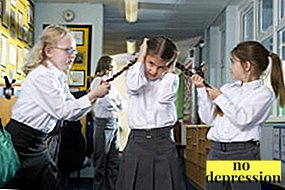
Considering harassment at school, it is important to affect this aspect of the phenomenon, since social networks have long become an integral part of human life, and school aggressors regularly resort to cyberbullying to aggravate the victim's pain and find new reasons for humiliation.
Sample school bullying: a girl who has never been popular in the class before, is gaining weight due to illness, other aspects of her appearance are also changing.
Aggressive part of classmates use it as a reason to start hounding. They humiliate and beat her for several months until she goes to another school.
Who is at risk? About children's bullying in this video:
The reasons
Speaking about the causes of school bullying, it is important to consider all aspects of this phenomenon. Bulling occurs not only because the victim has any features that make it an attractive target for bullying.
Much depends on how the educational institution approaches the issue of bullet prevention and whether it is appropriate at all, whether there are working mechanisms that will stop the harassment if it does begin.
Also the peculiarities of the psyche of individual aggressors. For example, some aggressors may have mental disorders that are not too noticeable to a non-professional, and violence is practiced in the families of some of the aggressors.
Yes, quite a significant part of aggressors do not have pronounced mental problems and poison the victim simply because it seems funny to them and does not stop, but it is important for educators who solve the problem of bullying that such a possibility exists and, possibly, the aggressor needs professional help.
When the discussion of the causes of bullying begins, it usually rolls into the realm of “Is the victim guilty or not?”, especially when people far from the theory of psychology and pedagogy participate in the dialogue.
So, in most cases, the victim is not to blame. There are situations when the victim becomes a child who behaves aggressively towards others, offends teachers, is arrogant.
But these situations are relatively few. In most cases, the victim is a child who is just convenient for baiting. because of the features of appearance and psyche.
Characteristics of the child, increasing the likelihood that he will become the object of harassment:
- Unattractive appearance, the presence of diseases, one of the manifestations of which are changes in appearance. Full children are often harassed (and “full” is a rather vague definition, because they can persecute because of the “fullness” even children whose weight is within the medical norm if there are various fetfobic prejudices in a class and most classmates are thinner than the object of harassment) , children with different features or skin diseases (for example, acne, psoriasis, vitiligo, large nevi and noticeable birthmarks), children with appearance features that most people find unattractive (wrong second bite too large, broad nose, droopy ears, and more). Also, children with noticeable scars, changes associated with their chronic diseases, and just those whose appearance is too unusual (red, with lots of freckles, albinos) can be persecuted. In the past decades, children wearing glasses have often been poisoned, but now myopia is becoming more common, therefore, because of glasses, it is less often poisoned. In adolescence, girls who do not use make-up, do not make stylish hairstyles, do not dye their hair, can poison.
In addition, the aggressors are often attracted by children from low-income and dysfunctional families.
- Unusual behavior. Often, children who behave differently than others are harassed, express views that differ from those of other classmates, the so-called “white crows”. Quiet, sensitive, uncommunicative children who find it difficult to restrain emotions are also being harassed. They find it hard to stand up for themselves, and their reactions are like the aggressors.
- Defects of speech, gait. Stuttering, problems with pronouncing certain letters, burr, problems with maintaining balance - all this can also be a reason for harassment.
- Poor physical fitness. Most often this applies to boys.
- Low or, conversely, high intelligence. Smart or stupid children usually stand out against the background of the main part of classmates, which becomes the reason for the beginning of harassment.
- Participation in any minority. Children with dark skin, characteristic features of the appearance of their nationality and race often become the object of harassment. Harassment of children belonging to the LGBT community is also common.
- Other characteristics. This group includes cases in which children persecute those whom the teachers have made their favorites, the children of teachers, the children of rich people who brag about their devices, and also those who sneak off, behaves rudely and inappropriately.
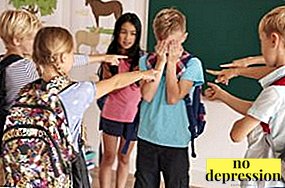
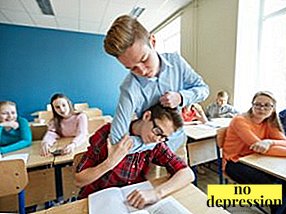
At the same time, as a rule, the victim’s attempt to correct his “irregularity”, because of which, as she believes, she is being bullied, leads to nothing.
A full child who has managed to lose weight is more likely to remain the target of persecution.
This is due to the fact that the main reason for bullying is the ability to poison someone. If the child has already been found convenient for harassment and it cannot be stopped, he will remain a victim. And under certain conditions, absolutely any child can become an outcast.
Psychologist-teacher Lyudmila Petranovskaya believes that the desire to poison the weaker - a phenomenon peculiar to children and adolescents due to age. In this age period, children tend to be part of a common “flock”, to be involved in something.
If children do not have something that unites them, which gives them the feeling that they are part of one whole, they can one day understand that a sense of cohesion, involvement can be obtained if you start humiliating someone together.
United against children feel greatThey feel that they are doing something fun and even good.
Therefore, it is important that the behavior of children is controlled by an adult who does not tolerate harassment and seeks to develop mechanisms for preventing bullying.
About the reasons for bullying at school in this video:
Common species
School bullying, depending on who is the aggressor and who is the victim, is divided into:
- Horizontal. This is a bulling, in which the aggressor and the victim are on the same line of the school hierarchy, that is, they are schoolchildren. By themselves, there are cases when boys are poisoning girls. They are very common, because boys are twice as likely as girls to act as aggressors, and girls as weaker ones are an attractive target for harassment. As an outcast in horizontal bulling can be either one person or a group. The number of aggressors can be unlimited, often almost all classmates of the child become the aggressors.
- Vertical. The participants of bullying are at different levels of the school hierarchy. A teacher, a director, a head teacher may act as a victim or an aggressor. Teachers who poison children are not uncommon, and they usually resort to psychological methods of influence that are not always noticeable. The teacher may more often call certain children to the blackboard, and if they cannot answer the questions, they will humiliate them in public. Also, students can start hounding a teacher who does not like. Usually in such harassment only psychological abuse is used.
In addition, the bulling is:
- Open This type of bulling is more common than hidden in school. If the bullying is open, the aggressors use rude methods of influence on the victim that are noticeable to others: they beat her, humiliate her, and so on.
- Hidden. The participants of bullying (mainly aggressors) try to hide the fact that the persecution is present. Such methods of influence on the victim as ignoring, boycotting are used. Also, the victim can humiliate on the sly, blackmail her.
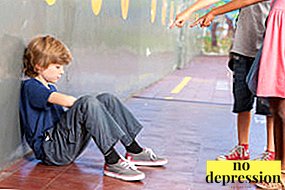
The psychology of the participants
Traditionally, participants are divided into bullying:
- The aggressors. In the group of aggressors, one can identify the initiators of the persecution and allies. Initiators are more active and aggressive, in some cases they may have mental illness. They are usually self-confident, seeking to assert themselves at the expense of the victim, to enjoy her pain. There is often a conviction in their mind that “if I can hurt, do anything, it means I'm stronger”. In some cases, the aggressors are children with, on the contrary, low self-esteem, who also try to assert themselves at the expense of the victim and feel better, more meaningful. Allies can be not only friends-singers of the main aggressor, but also children who are afraid to be in the place of the victim and simply submit to the authority in the person of the main aggressors.
Only about 20% of aggressors admit that they consider the persecution well-deserved, the rest simply assert themselves at the expense of the victims and enjoy the process, find the bullying a ridiculous and fun affair.
- Of victims Outcast can be any child under certain conditions. But usually the victims are anxious, depressed children who do not behave like everyone else, have low self-esteem, rarely seek to communicate with their peers. Often, victims are sure that no one will help them if they try to influence the aggressors through teachers, other classmates and parents, which is usually associated with their negative life experiences. And there are many such situations: 40% of the victims are silent about what is happening.
- Observers. These are adults and children who know that someone is being bullied, but they are not doing anything to stop it. Conformity is peculiar to children-observers; they are often afraid that they will be poisoned if they try to intercede and do not want to lose their comfortable position in the classroom.
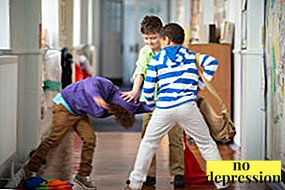 And adults may not be confident in their abilities. Also, often people become passive observers from the principle “my hut is on the edge, not my business”. Among adults there is a perception that children themselves must deal with their own problems, and this position is mainly detrimental, not good. In some cases, adults receive the extremely serious consequences of their inaction in the form of suicides and disability of victims.
And adults may not be confident in their abilities. Also, often people become passive observers from the principle “my hut is on the edge, not my business”. Among adults there is a perception that children themselves must deal with their own problems, and this position is mainly detrimental, not good. In some cases, adults receive the extremely serious consequences of their inaction in the form of suicides and disability of victims.
Also in some classifications another type of participant is included - defenders. This may be classmates who are trying to protect the child from attack. In this case, the actions of defenders usually do not help to completely eliminate the problem of harassment.
The consequences of bullying
About 45% of people who were outcasts in childhood subsequently suffer various mental disordersespecially depressed.
Also, depression, neuroses are common among rogue children. Many of them have sleep disorders, auto-aggressive tendencies (hair pulling, burning, skin scratching), many are serious. start thinking about suicide.
Some of them are trying to kill themselves, and in some cases they succeed.
Those who survived a suicide attempt may experience health problems, such as gastrointestinal tract diseases in those who tried to kill himself with the help of an overdose of drugs or ingestion of acids, alkalis.
In rogue children, self-esteem decreases, they begin to hate themselves.
They are also afraid of everything connected with the school, they dream never to return to it, they have performance deteriorates. All this can significantly affect their future.
About the consequences of bullying at school in this video:
How can a child resist bullying?
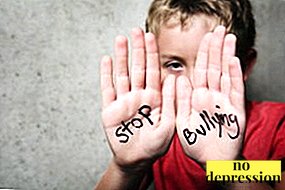
They scoff at me at school and spread rot: how to fight? Where to complain?
Magic recipesthat are guaranteed to allow the child to stop being an outcast in the class does not exist.
Attempts by a child to correct his “irregularity” rarely change something, since the problem of bullying in most cases is not in the behavior of the victim, but in the behavior of the aggressor, who considers the mockery to be permissible and fun.
Attempts to give change to the offender also do not always work, and sometimes they can only strengthen bullying, inflame the aggressors.
The notorious “do not pay attention”, about which the majority of adults speak, when a child turns to them, complaining that he is being offended, also does not always work.
Some offenders, noticing that the victim is trying to ignore them, act more aggressively and tough, to attract attention and get the desired reaction.
If the child is not the sixth incarnation of the Buddha, he can't keep calmif he is beaten purposely, taken away, humiliated at every opportunity.
Inaccurate intervention of adults in the situation can also inflame the offenders and strengthen the harassment.
Tips for a rogue child:
- If you have the opportunity, attend sectionsthat will help you fight back if they beat you.
- If the bullying is related to some kind of conflict situation, and the offenders seemed to be adequate people before the beginning of the persecution try to talk to them, offer constructive solutions to the conflict. Try to talk one-on-one with each other, because in the crowd they will simply work for the public, and constructive conversation will not work.
- Tell about the harassment adultyou trust and who treats you well. This may be a teacher, a relative. Silence about harassment is not worth it: adults can try to change the situation more effectively than one oppressed child. In the end, there are always radical methods of solving problems, such as changing the school, lawsuits against the offenders. But, if the person you asked for help is doing nothing, it is better to say about bullying someone else. If your parents do not want to solve anything and react aggressively, it is better to try to appeal to the school authorities.
- If you are beaten, do not be silent about it. If after the beatings on your body there are visible traces, you feel bad, you need to contact the emergency room or clinic. There you will be able to fix the beating, so that in the future your words will have more weight. Tell the health care provider that your classmates beat you and that you want to fix it.
- Also makes sense discuss the situation with the school psychologist and with the leadership of the school. Если у тебя есть документ, который подтверждает, что тебя избивали, покажи его им. Также можно показать аудиозаписи, видеозаписи и другие свидетельства происходящего.
- Помни, что учителя и руководство школы обязаны помочь тебе, и существуют механизмы, позволяющие решать проблему буллинга. Это групповые сеансы с психологами, психотерапевтами, совместное неагрессивное обсуждение ситуации с участием взрослых и другие методы.
Как ребенку противостоять травле в школе? Find out from the video:
Советы психолога родителям и педагогам
Советы родителям униженных сыновей и дочерей:
- Не пускайте все на самотек. Пассивное отношение к ситуации, рядовые советы вроде «не обращай внимания», обесценивание страданий ребенка фразами «ну, у всех такое бывает», «это возраст такой», «да ну, ерунда какая» не поможет решить проблему и лишь позволит ребенку понять, что Вам не стоит доверять.
- Идея прийти в школу и наорать на всех тоже плохая. Проблемы такого рода нужно решать последовательно и в здравом рассудке. Вашему ребенку будет только хуже, если одноклассники будут ассоциировать его с той-матерью-которая-приходит-орать и выглядит смешно.
- Поищите информацию о других школах. Возможно, ситуация усугубится настолько, что ребенка придется перевести.
- Если Вы видите на теле ребенка следы побоев, необходимо отвести его в травмпункт и получить документ, подтверждающий, что его избили. Особенно важно это, если побои происходят систематически.
- Если ребенок говорит, что его избивают, когда он уходит из школы, есть смысл какое-то время встречать его после занятий.
- Поговорите с ним, объясните, что постараетесь сделать все возможное для того, чтобы проблема была решена. Дайте ему понять, что с Вами безопасно, Вам можно доверять. Попросите его написать на бумаге имена и фамилии тех, кто обижает его.
- Если насилие в отношении ребенка будет продолжаться, важно уведомить о происходящем руководство школы, классного руководителя, школьного психолога. Если они не пытаются решать проблемы, обратитесь в полицию.
- Если здоровье ребенка позволяет, предложите ему посещать курсы по самообороне, спортивные секции.
- Отведите ребенка к психологу.
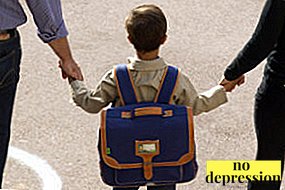
Советы преподавателям:
- Соберите вместе детей, расспросите их о причинах этого, объясните, что травля недопустима. Расскажите, что чувствуют дети, столкнувшиеся с травлей, ответьте на претензии и вопросы агрессоров. Не повышайте голос, не оскорбляйте никого, сохраняйте самообладание. Также есть смысл побеседовать с каждым из детей, активно участвующих в травле, один на один, чтобы диалог был более продуктивным.
Когда вокруг агрессора нет поддержки, Ваш авторитет будет значительнее, а у него не будет возможности играть на публику.
- Если травля продолжится, вызовите родителей в школу и проведите индивидуальные беседы. Также важно постараться поднять проблему травли на школьных собраниях. Также важно побеседовать с родителями жертв: порою они вообще не в курсе того, что происходит.
- Уведомите о происходящем школьного психолога, посоветуйтесь с ним. Полезно направить к нему жертв и обидчиков, чтобы он обсудил ситуацию с каждым их них.
- Если вы не классный руководитель группы, свяжитесь с классным руководителем и при необходимости действуйте с ним совместно, особенно если он достаточно пассивно реагирует и вряд ли станет делать что-то самостоятельно.
- Если ребенка начнут регулярно избивать, а агрессивность угнетателей возрастет, необходимо уведомить об этом руководство школы.
Важно объяснить ребенку, что он может искать защиты здесь, приходить в кабинет, сообщать о произошедшем.
Как поступать родителям подростка, когда его травят в школе? Мнение психолога:
Профилактика
Основная профилактика буллинга:
- важно, чтобы в школе были грамотные педагоги, которые заинтересованы в том, чтобы формировать у детей положительные качества;
- начинать профилактику буллинга надо с младших классов: в этот период в классе еще не сформировалась жесткая иерархия;
- важно совместно с классом в процессе диалога придумать правила поведения, записать их и повесить в классном кабинете, а при необходимости напоминать об их существовании;
- нужно стараться объединить школьников общим делом. В этом помогут конкурсы, соревнования, различные совместные мероприятия.
Реальные истории
Несколько историй о травле:
- История Кати. В нашем классе существовала иерархия - богатые дети задирали тех, у кого родители не слишком обеспеченные. Надо мной начали издеваться после того, как узнали, что у моей сестры аутизм. Она посещала то же учебное заведение, что и я, и ее активно травили, а меня за компанию: они решили, что у меня не все хорошо с головой и я такая же, как она. Унижений стало меньше лишь в последнем классе школы. Сейчас я не испытываю ненависти к обидчикам и думаю, что они могли измениться.
- История Светы. Мой отец кавказец, а мать русская, а я пошла в отца, поэтому меня травили из-за внешности, называли «нерусью» и кричали, чтобы я уехала, шутили, что имя мне выбрали неправильное, надо было кавказское. Особенно обострилась ситуация после нескольких громких дел в отношении кавказцев. Когда меня в очередной раз избили, я рассказала все родителям, и мы решили, что мне нужно перейти в другую школу. Когда я перешла, стало легче, хотя полностью нападки не прекратились.
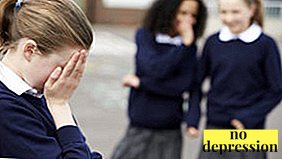
Также существует множество фильмов и сериалов, затрагивающих тему буллинга в школе, к примеру несколько экранизаций «Кэрри» Стивена Кинга, полнометражное аниме «Форма голоса», известный советский фильм «Чучело», снятый по одноименному произведению Владимира Железникова.
Буллинг - серьезная проблема современности, которую следует решать комплексно и решительно. Важно воспитывать в детях сострадание, объяснять им, что люди разные, у каждого свои особенности психики, характера, и постепенно количество детей, столкнувшихся с буллингом, снизится.
Реальная история жертвы буллинга:

 And adults may not be confident in their abilities. Also, often people become passive observers from the principle “my hut is on the edge, not my business”. Among adults there is a perception that children themselves must deal with their own problems, and this position is mainly detrimental, not good. In some cases, adults receive the extremely serious consequences of their inaction in the form of suicides and disability of victims.
And adults may not be confident in their abilities. Also, often people become passive observers from the principle “my hut is on the edge, not my business”. Among adults there is a perception that children themselves must deal with their own problems, and this position is mainly detrimental, not good. In some cases, adults receive the extremely serious consequences of their inaction in the form of suicides and disability of victims.